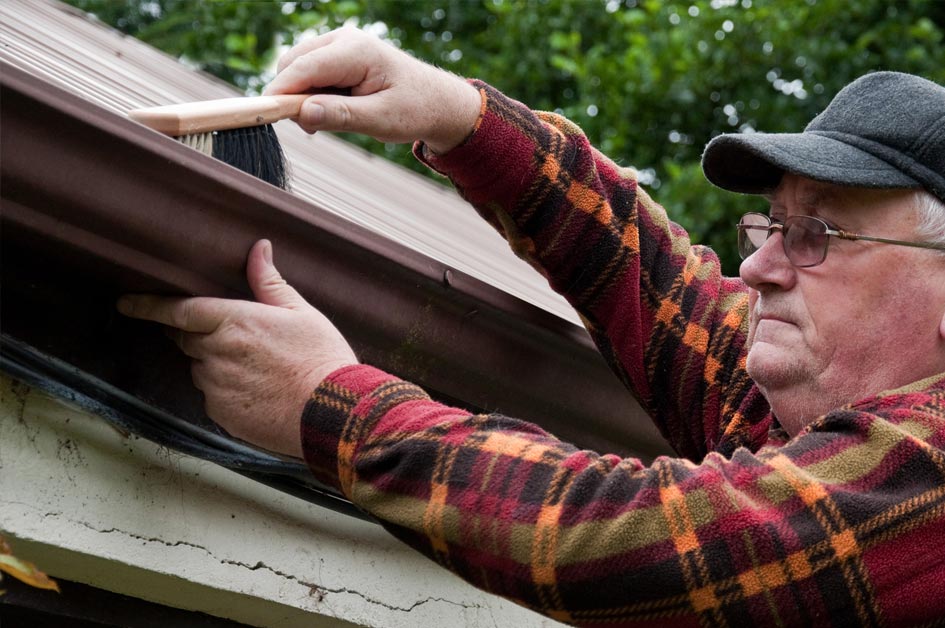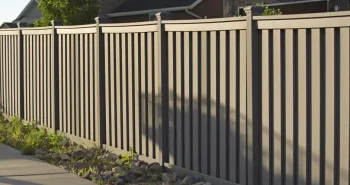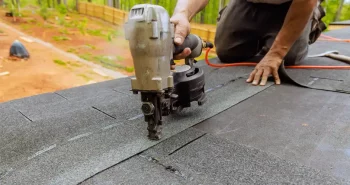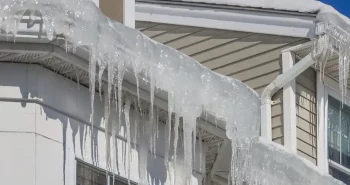How to Fix Common Gutter Problems
Many homeowners agree that cleaning the gutter system is one of their least favorite tasks on the to-do list. At the same time, this vital maintenance chore is important as neglecting your drainage system can have detrimental effects on the structural stability of your home. In fact, improper drainage for extended periods of time can lead to foundational issues that are not only expensive to repair, but also extremely time consuming. Rather than dealing with the inconvenience that follows these worst-case scenarios, take some time to clean your gutters at least twice a year. If you absolutely despise doing it, hire a professional. If you plan to do it yourself, keep an eye out for any signs of damage or deterioration while you’re there. To help you reduce the spread of any issues found, here’s more information on how to fix common gutter problems.
The Importance of Regular Gutter Maintenance
Regular gutter maintenance is one of the most important preventative measures against foundation damage surrounding your home. Since several repairs can be easily handled and gutter replacement is straightforward, there’s no reason to bypass regular inspections or put off repairs. There are more tedious problems that require professional attention, so being able to recognize early warning signs will provide insight as to when you need to call an expert. Regular gutter maintenance can help prevent water damage, flooded basements, sagging, and structural instability, so try to avoid neglecting care. Being proactive will pay off in the end.
8 Common Gutter Issues
Regardless of if you’re a first-time homeowner or simply trying to be more diligent, it’s important to know what to look for. To help you easily identify signs of problems, consider the following eight common gutter issues and how to fix them.
1. Blocked Gutters
One of the most common gutter issues that plague homeowners each year is clogs or blockages. During spring and fall, leaves and other debris from landscaping accumulate on your roof and wind up in your gutters. When gutters aren’t cleaned, debris can cause clogs, which eventually leads to overflow. Overflow is dangerous because it causes the ground surrounding your foundation to saturate, which can lead to erosion over time.
This is one of the simplest issues to tackle. All you need to do is clean the gutters surrounding your home at least twice a year—more if you live in an area with higher foliage. If you’re unable to do this yourself, contact a professional for help.
2. Sagging
Sagging gutters are pretty easy to spot. There will be a dip somewhere along the line surrounding the perimeter of your house. When this occurs, it increases the risk of standing water or excess pressure, which reduces the efficiency of drainage and can put unnecessary strain on the system. If sagging gets to a point where drainage cannot occur at all, the gutter system may end up collapsing completely.
The best way to fix sagging gutters is to either tighten the screws holding up the gutters or rehang the section that’s affected. You’ll likely need to upgrade the hardware, but there are other instances that warrant a call to a contractor. If there are signs of foundation rot or decay, contact a roofing professional.
3. Leaking
If your gutters are leaking, they’re essentially rendered pointless. Gutter leaks can expedite erosion of the foundation and supporting structures, which may eventually lead to large holes or tears that require complete gutter replacement. The longer a leaking gutter is left unrepaired, the more likely the damage is to spread.
Repairing a leaking gutter is pretty low maintenance. You’ll need to apply a piece of plastic roofing cement to the hole using a putty knife or place an extra piece of flashing over the hole and secure it with cement. If this sounds like it might be too difficult for a DIY project, don’t hesitate to call a roofing professional.
4. Poor Downspout Drainage
Many homeowners think that the only problem that can happen with downspouts is a clog or separation. However, if the water is draining too close to your home, it can be equally detrimental. Downspouts that don’t lead water far enough away from the foundation can increase pooling, which can decrease the stability of your home. Eventually, this may also cause flooding or more serious water damage. You can fix this problem easily by installing a downspout extender.
5. General Damage
General gutter damage is also a common occurrence, especially following a storm. If you disregard ongoing maintenance or fail to make repairs in a timely manner, gutter damage is inevitable, and it will continue to get worse until things are fixed.
Following a heavy storm, take the time to do a visual inspection from the ground. You should also undergo yearly maintenance with a professional. If there are damages present, make sure that you replace or resecure the gutters as necessary to avoid more expensive issues later on. Your gutters are an essential part of your home’s overall system and while they don’t seem like much, they can make a substantial impact on structural stability.
6. Improper Gutter Slope
Gutter slope, or pitch, refers to the degree in which gutters slant downward to facilitate an efficient flow of water. The slant is extremely small, which is why many people don’t even realize that gutters aren’t parallel to your home’s roofline. However, when the gutter slope gets out of alignment, it can lead to standing water and subsequent issues.
The process of correcting sloped gutters should be left up to the professionals because it requires a very specific angle for proper flow. Over or under adjustments can lead to further damage that extends past your drainage system. Since it can be hard to recognize signs of gutter slope on your own, scheduling a yearly inspection is recommended.
7. Joint Separation
Understandably, gutters don’t come as one complete system. Gutters need to be installed in sections and are attached to one another using joints. These areas are more vulnerable to damage or debris accumulation and are susceptible to separation under excess weight. If you notice any signs that your gutters are coming apart or separating, contact a professional. You can get them back together using caulk or glue, but for a truly strong seal you’ll need to install rivets, which require the use of a drill.
8. Overgrowth or Weeds
While it may sound odd, it’s not uncommon for homeowners to find plants sprouting in their gutter system. Most often, this is caused by bird droppings, seeds, and other debris that transforms into a miniature ecosystem that supports plant growth when mixed with rain. The best way to avoid this problem is to keep your gutters clean, as plant growth can add harmful excess weight that will damage your gutters.
The Best Ways to Prevent Future Gutter Problems
When properly cared for and maintained, gutters can last up to 20 years or longer. The best way to prevent future gutter problems and get the most out of your home’s drainage system is to keep them clean. By clearing debris throughout the year, you eliminate excess strain on your gutter system and reduce the risk of damage. Ideally, this should happen both in the spring and fall, when debris accumulation is at its peak. You can also help reduce the need for cleaning by installing gutter protection. Gutter guards can be secured to the top of the system, which keeps large debris from creating clogs. They may also help reduce the formation of ice dams in the winter. However, adding gutter guards does not mean you can forego maintenance—they just add an extra degree of protection against damage.
Following a storm, always make a visual inspection of your gutter system from the ground. This will help you notice any issues so you can address them before they cause further problems. It’s also good practice to have your gutters professionally inspected at least once or twice a year.
If you notice any signs of damage, or think your gutters need to be replaced, don’t hesitate to call the professionals at First Star Exteriors. First Star Exteriors uses high-quality material from brand-named products to provide you with the best gutters and drainage system available. Our roofing contractors have years of experience in installing new gutters, downspouts, and assessing your existing drainage system or roof for any signs of damage.
To learn more about our gutter maintenance, repair, or installation options, contact us at (479) 267-4800 or fill out our contact form here.





